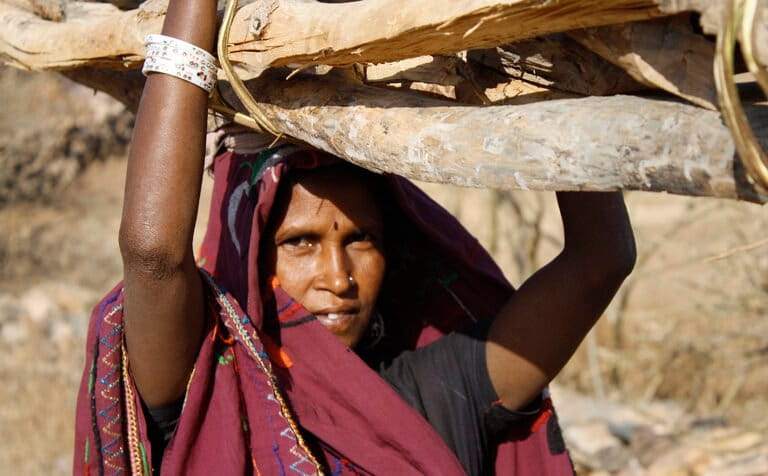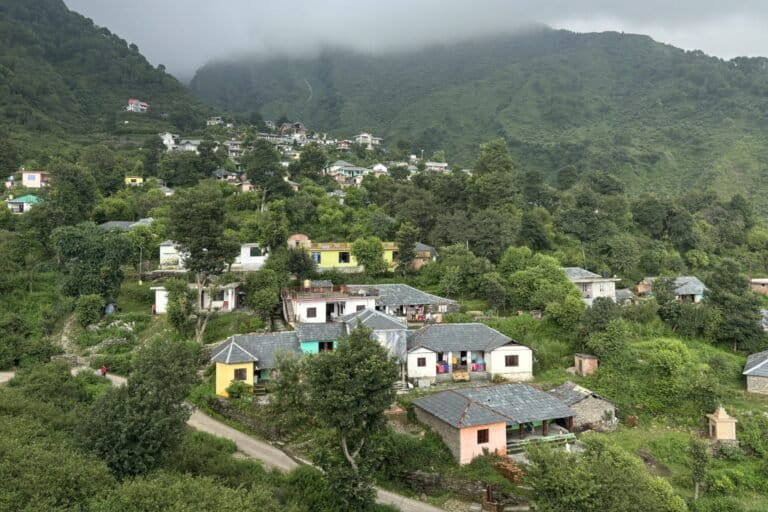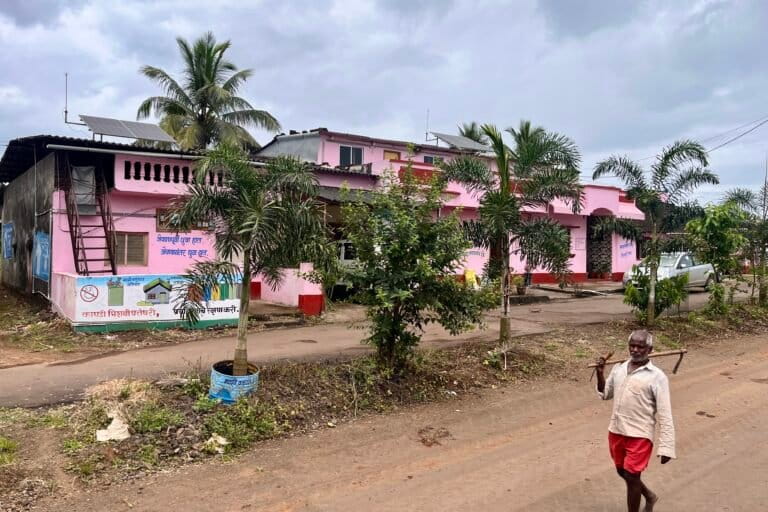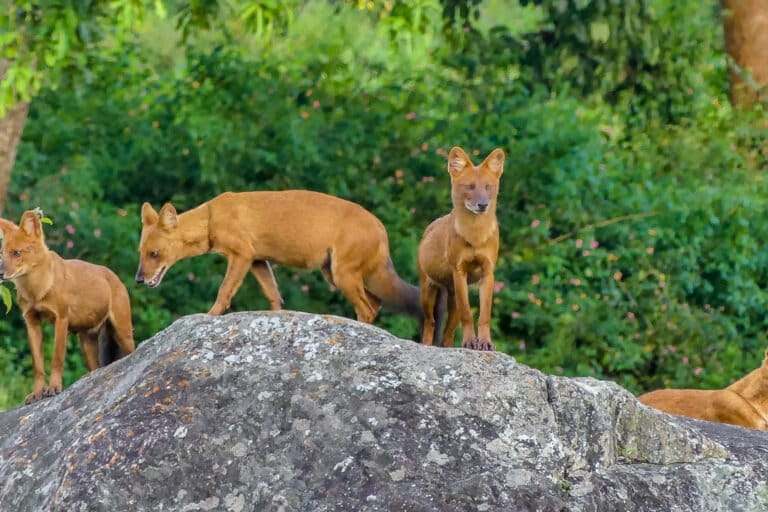- Summer vacation play moved from outdoors to indoors for many city children this summer as temperatures rose to record levels.
- Lesser time playing outdoors could have implications on a child’s overall personality, growth, health and well-being.
- The combination of intense heat and concrete used in playgrounds that heats up, makes the spaces difficult to use as well during summer.
Noida-based Ragini Sinha had her son Atharv’s summer break plan ready in late May. They planned to visit Qutub Minar and Red Fort, experience the charming narrow lanes of old Delhi, home to renowned poet Ghalib, old spice markets, historic food lanes, and exquisite havelis and explore other suburbs in the Delhi-National Capital Region (NCR). She had also enrolled her 10-year-old in a karate class close to home.
But the extreme weather conditions in the region, in May and June, forced them indoors; the outdoor experiences were shelved and special classes cancelled.
“This is what climate change-induced weather conditions are doing to children. Beyond the discourses about economy and ecology, climate change is silently altering our lives, especially the lives of children. The changing face of summer vacation has amplified it,” Sinha says as she sighs.
Sinha’s concern about changing realities is not a case in isolation – it is true in most parts of India – both rural and urban.
Shahana Fatima, a 33-year-old Srinagar-based entrepreneur, quashed all summer break plans — enrolling her six-year-old son Maviyah in Judo and football classes and travelling to Pahalgam. She explained how the picturesque Pahalgam hill station is generally cooler than Srinagar, but this year, it was a much hotter experience.
“The heat was so unbearable this time that I had to pause my regular coaching classes for a whole month in June — a first in my half-decade-long coaching career,” says Sanjay Chhatry, a karate coach associated with the Noida-based Shitu-Ryu Karate Do Association. “Besides, outdoor summer camps organised by schools or other organisations were either cut short or cancelled.”
Changing dynamics of childhood summer
Most parts of India experienced excessive heatwaves in May and June and were linked to several health impacts and even deaths. Delhi NCR witnessed record-breaking heatwave conditions, with temperatures almost touching 50 degrees Celsius. Further north, the Kashmir valley, too, witnessed excessive weather change and was grappling with a rare heatwave.
The excessive heatwave and its emergency can be gauged from the fact that the newly appointed health minister of the federal government in New Delhi reviewed the situation within days of assuming charge and directed hospitals and districts to make special provisions to deal with it.
“’Go outside and play’ has been a time-tested strategy for parents to channelise the energy of children and make them acquire new life skills. It did not work out this year, as I was apprehensive about Maviyah’s health. So, he spent the break watching television in an air-conditioned room. I felt helpless,” Fatima says, adding that the changing weather has forced them to install air conditioners in their house, which was generally considered a non-utility product in Kashmir.
“This summer vacation reminded us that climate change is now a reality. It is reshaping our lives and hitting children the hardest,” she says.

There was a time when summer vacations meant playing outdoors from morning till evening, taking strolls in the cool morning breeze to climbing trees in the afternoon, playing matches on roads and backyards, cycling, racing, and getting immersed in games like hide-and-seek and tag under the fading orange sky. The children would return home for some food breaks, lots of stories of their neighbourhood adventures and curious discoveries. Summer break was a time of learning life skills and developing well-rounded personalities – all outdoors.
Today, a summer vacation of this sort seems like a reverie. The record-breaking high temperatures, unrelenting loo winds, long spells of heatwave conditions, and constant weather warnings have changed things. In the heat, playgrounds were mostly deserted, excursions and exploration tours were a daunting task, and cramped indoors became the new outdoors to avoid health risks.
According to experts, activities such as swinging, running, climbing and jumping allow children to channelise their high energy levels. Such movements strengthen muscle groups, enhance motor skills, social skills and offer sensory stimuli.
“Outdoor playtime (during summer vacation) is not an expendable pastime but a vital activity for children’s growth. Lack of it causes multiple physical and mental issues such as attention deficit, mood disorder, reduced cognitive function in children, nutritional deficiencies, poor vision and obesity,” says Dr. Avdhesh Ahuja, a paediatrician and neonatologist at Fortis La Femme hospital in south Delhi.

Rising concerns in child development
The changing face of summer vacations is not a seasonal issue but a stark reminder of how rising temperatures due to climate change have started adversely impacting childhood and casting serious implications on children’s overall personality, growth, health and well-being.
“Climate change impacts children’s environments and their ability to survive and thrive…in extreme heat, children are more prone to heat stroke that can cause organ and brain damage. Children are uniquely vulnerable to climate change. It’s time we prioritise children’s environmental health to protect them from the effects of climate change,” according to a report by the UN Children’s Fund (UNICEF).
Agreeing with these statements, Dr. Samir Parikh, chairperson, Fortis National Mental Health Program, a mental healthcare initiative of the hospital chain, says, “Summer vacation is a key part of children’s growth story. Outdoor playtime provides new and stimulating experiences and engages different parts of the brain and body, enhancing overall health,” says Parikh. He says lack of outdoor activities among teenagers can lead to negative thinking, which may lead to anxiety, stress and depression.
In the case of small children, outdoor activities play an even more crucial role during the summer break, says Dr. Stuti Kumar, a Pune-based child psychologist. “Lack of messy and free-flowing outdoor play is hampering kids’ cognitive development.” Sharing a comparative experience, she says that of every 100 patients she worked on, only two to three used to exhibit delayed milestone development four years back. Now this number is in double digits. “A three-year-old child, for instance, is unable to recognise all colours or follow simple instructions. They exhibit texture issues – dislike touching food, grass or mud with bare hands or feet. Also, children have social anxiety – aversion to crowds or loud noise – due to scarce outdoor playtime.”
Vadodara-based Laishram Priyadarshini says reduced summer break playtime, due to excessive heat, had some impact on her nine-year-old son Abraham Hoarokcham’s social skills. “When school re-opened Abraham faced difficulty in mixing with peers for days together,” observes Priyadarshini.
During summer breaks, playtime and the playground are where children learn negotiation skills, teamwork, managing emotions, ignoring distractions, and focusing on goals. And its deprivation is altering the personalities of children and their connection with nature, observes David Chirag Din, former principal of Uttarakhand-based Maxton Strong School and an educationist with four decades of experience.
“Now, what children learn naturally during summer break playtime has to be taught in the classroom,” explained Chirag Din, adding that he has seen children increasingly become temperamental, have high anxiety and low capacity to take constructive criticism. Children who don’t get enough playtime outdoors, in nature, may be angry and irritable, he says, advising parents and schools to inculcate a sense of responsibility towards nature and a habit of planting plants. “Nature heals, nurtures and combats the impact of excessive weather conditions.”

Fatima of Srinagar, agrees and says, “Urban India is a concrete jungle; even the play areas are made of concrete. The combination of intense sun and concrete floors at playgrounds becomes nasty. Imagine how children playing on the ground must be feeling: the ‘floor is lava’ quite literally. Indian play areas should be built keeping climate concerns in mind.”
Child psychologist Dr. Stuti says she has started counselling parents to include outdoor playtime in their children’s schedule on a priority basis. She also urges schools and urban planners to focus on increasing the green cover around playgrounds and creating alternative sizable indoor play areas for kids when outdoor activities become unsustainable.
“UNICEF is bearing witness to the ways in which children’s health and communities are already being altered in a climate-changed world. Children need to be at the centre of the global response,” the U.N. body has said.
Banner image: A deserted playground and basketball court in Noida. Image by Shweta Thakur Nanda.














